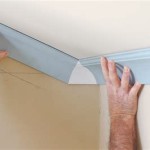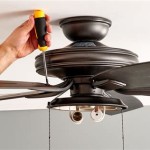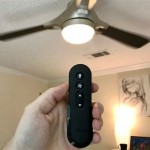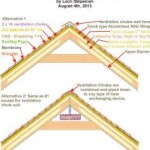Understanding Heater Vents in Ceilings: A Comprehensive Guide
Heater vents in ceilings are a common feature in many residential and commercial buildings, offering a method of distributing warm air throughout a space. These vents play a crucial role in maintaining consistent temperatures and ensuring efficient heating systems. Understanding their design, functionality, advantages, disadvantages, and maintenance requirements is essential for homeowners, building managers, and HVAC professionals.
The location of heater vents, particularly when installed in ceilings, directly impacts the air circulation and overall heating effectiveness of a room. While floor-based vents rely on warm air rising naturally, ceiling vents utilize gravity to distribute heated air downwards, potentially creating a more even temperature gradient in some circumstances. This article will provide a detailed overview of ceiling-mounted heater vents, exploring their key aspects and offering practical insights into their proper use and upkeep.
Key Point 1: Design and Functionality of Ceiling Heater Vents
Ceiling heater vents are designed to release heated air from the building's ductwork into the occupied space. Typically, these vents are rectangular or circular and are constructed from materials such as metal (steel, aluminum) or plastic. The design often incorporates adjustable louvers or deflectors that allow for directional control of the airflow. This adjustability is a significant benefit, enabling occupants to customize the direction of the warm air to suit their preferences and the specific layout of the room.
The functionality of a ceiling heater vent is closely tied to the overall heating system design. The ductwork delivering the heated air must be appropriately sized and insulated to minimize heat loss before the air reaches the vent. Furthermore, the placement of the vents within the ceiling is crucial. Ideally, vents should be positioned to maximize air circulation, avoiding obstructions that could impede airflow. Correct installation and system design contribute significantly to the even distribution of heat, preventing cold spots and ensuring occupant comfort.
The internal mechanisms of the vent, such as the louvers, are also vital to its function. They are designed to be easily adjustable, allowing users to modify the distribution pattern. Some advanced vents may feature automated dampers controlled by thermostats to regulate airflow based on temperature readings. These automated systems contribute to greater energy efficiency and more precise temperature control throughout the building.
Different types of ceiling vents cater to various needs. Diffusers, for instance, are designed to disperse air over a wider area, promoting gentle and even heating. Grilles, on the other hand, typically direct air in a more focused stream. The choice between a diffuser and a grille depends on the size of the room, the height of the ceiling, and the desired airflow pattern. Careful consideration of these factors is essential for optimal heating performance.
The integration of ceiling vents with advanced HVAC systems, such as zoning systems, enhances their effectiveness. Zoning systems divide a building into separate heating zones, each with its own thermostat and set of vents. This allows for independent temperature control in different areas, preventing overheating or underheating and improving energy efficiency. Ceiling vents, when used in conjunction with zoning systems, offer a highly refined approach to temperature management.
Key Point 2: Advantages and Disadvantages of Ceiling Heater Vents
Ceiling heater vents offer several advantages, making them a popular choice in many buildings. One of the primary advantages is their ability to distribute warm air from above. Since warm air naturally rises, ceiling vents can provide a more even heating distribution compared to floor vents, particularly in rooms with high ceilings. Blowing warm air downwards can help counteract the natural stratification of air, where warm air accumulates at the ceiling level.
Another advantage is the aesthetic appeal. Ceiling vents can be designed to blend seamlessly with the ceiling, minimizing their visual impact on the room. Modern vent designs often incorporate sleek lines and minimalist aesthetics, making them virtually invisible. This is particularly important in contemporary designs where visual clutter is minimized.
Furthermore, ceiling vents present fewer obstructions compared to floor vents. Floor vents can be easily blocked by furniture or rugs, impeding airflow and reducing heating efficiency. Ceiling vents, being out of reach, are less susceptible to such obstructions, ensuring consistent and unobstructed airflow.
However, ceiling heater vents also have disadvantages. A significant drawback is the potential for heat loss through the ceiling. Poorly insulated ductwork in the attic or above the ceiling can lead to significant heat loss, reducing the overall efficiency of the heating system. Proper insulation of the ductwork is crucial to mitigate this issue.
Installation can be more complex and costly compared to floor vents. Ceiling vents require access to the ceiling space for ductwork installation, which may involve cutting and patching drywall. This process can be labor-intensive and requires professional expertise to ensure proper sealing and insulation.
Maintenance can also pose challenges. Cleaning ceiling vents may require the use of ladders or other specialized equipment, making them less accessible than floor vents. Regular cleaning is essential to remove dust and debris that can accumulate in the vents and ducts, affecting airflow and indoor air quality.
Consideration must also be given to the building's structural design. In some buildings, the ceiling structure may not be suitable for housing ductwork. Low ceiling heights or limited space above the ceiling can make it difficult or even impossible to install ceiling vents. A thorough assessment of the building's structure is necessary before deciding on the type of heating system and vent placement.
Key Point 3: Maintenance and Troubleshooting of Ceiling Heater Vents
Regular maintenance is essential for ensuring the optimal performance and longevity of ceiling heater vents. One of the most important maintenance tasks is cleaning the vents regularly. Dust and debris can accumulate in the vents, restricting airflow and reducing heating efficiency. This buildup can also become a breeding ground for allergens and other pollutants, negatively impacting indoor air quality.
Cleaning ceiling vents can be done using a vacuum cleaner with a brush attachment. Gently vacuum the vent to remove surface dust and debris. For more stubborn buildup, a damp cloth or sponge can be used to wipe down the vent. Ensure that the vent is completely dry before reinstalling it to prevent mold growth.
In addition to cleaning the vents, it is also important to inspect the ductwork regularly. Look for any signs of damage, such as leaks or tears, which can lead to heat loss and reduced heating efficiency. Damaged ductwork should be repaired or replaced promptly to prevent further deterioration.
Troubleshooting common issues is also a key aspect of maintenance. If a vent is not distributing air properly, check the louvers to ensure they are properly adjusted. Also, inspect the ductwork for any obstructions that may be blocking airflow. Sometimes, the issue may be related to the furnace or air handler itself, requiring professional inspection and repair.
Another common issue is noise. Noisy vents can be caused by loose connections, vibrating ductwork, or excessive airflow. Tightening loose connections and insulating the ductwork can help reduce noise levels. If the noise persists, it may be necessary to adjust the airflow settings of the furnace or air handler.
Condensation around ceiling vents can be a sign of excessive humidity or poor insulation. Addressing the underlying cause of the condensation is essential to prevent mold growth and water damage. This may involve improving ventilation, insulating the ductwork, or addressing any leaks or water intrusion issues.
Proper maintenance not only ensures optimal heating performance but also extends the lifespan of the vents and the entire heating system. Regular inspections, cleaning, and prompt repairs can prevent minor issues from escalating into major problems, saving time and money in the long run. A well-maintained heating system also contributes to improved indoor air quality and a healthier living environment.

The Benefits Of Using Ceiling Hvac Vents

Ceiling Ac Vents Pros And Cons Aire Serv

Heating Vents Greg Maclellan

How Do You Clean Heating Ducts In The Ceiling Duct Masters

Changing All My A C Heating Ceiling Vents For Better Airflow Between Naps On The Porch

Replacing A Heat Vent Register

How To Open And Close Ceiling Air Vents

Heating Vents Greg Maclellan

Replacing Ducted Heating Vents In Barwon Heads Geelong Enviro Plumbing

Changing All My A C Heating Ceiling Vents For Better Airflow Between Naps On The Porch
Related Posts








